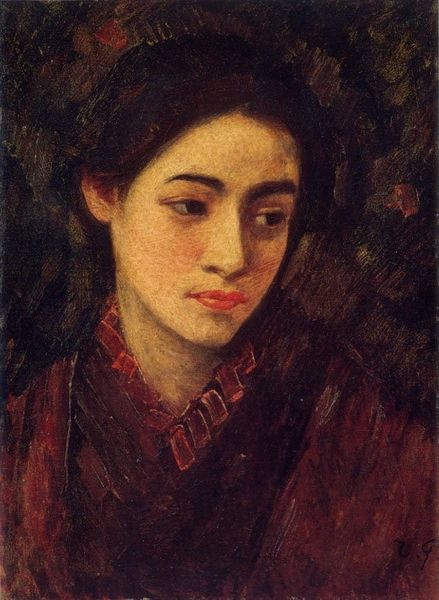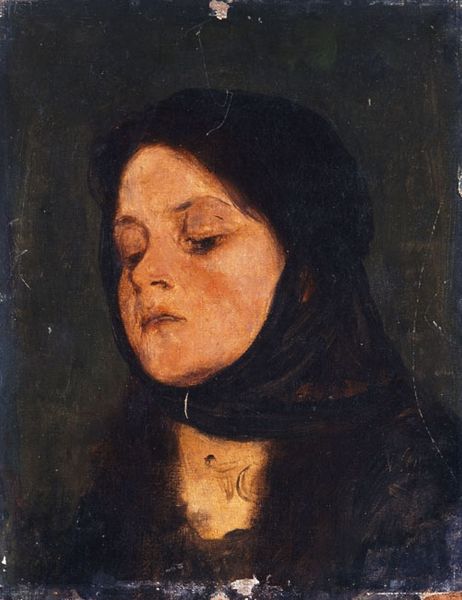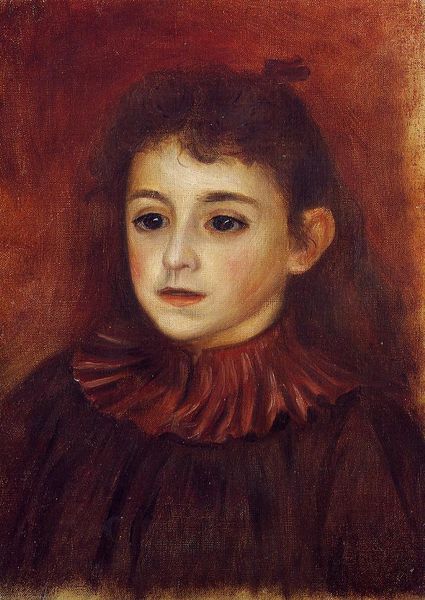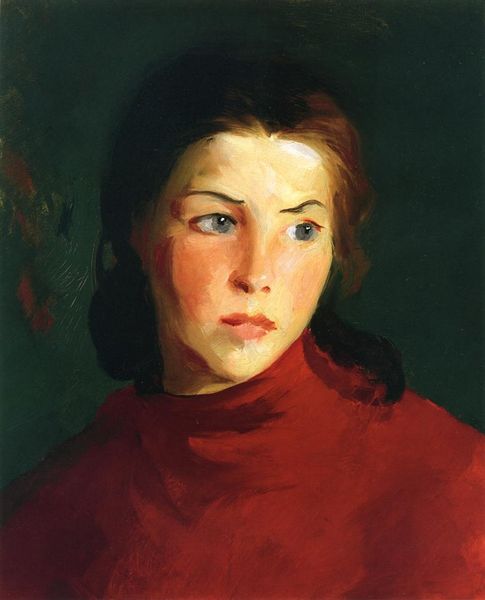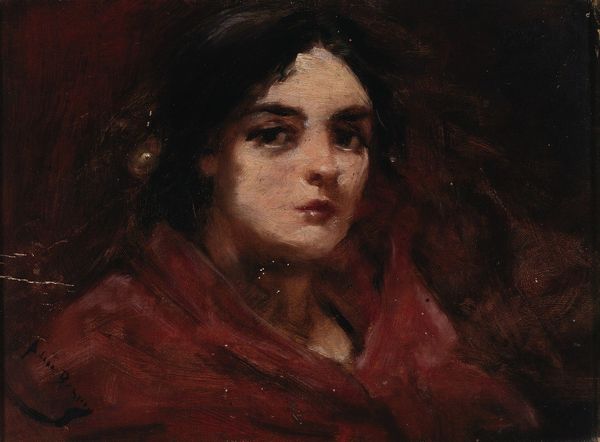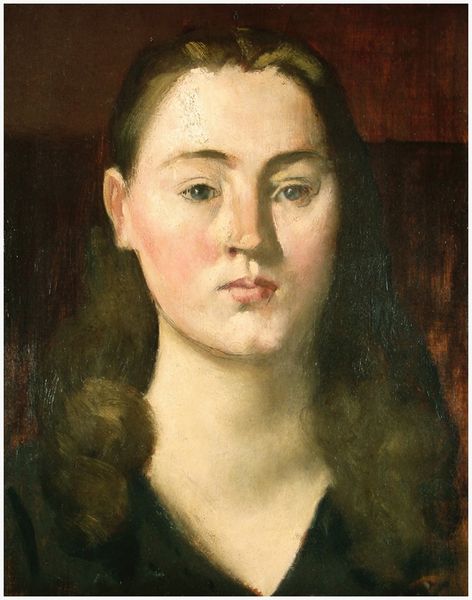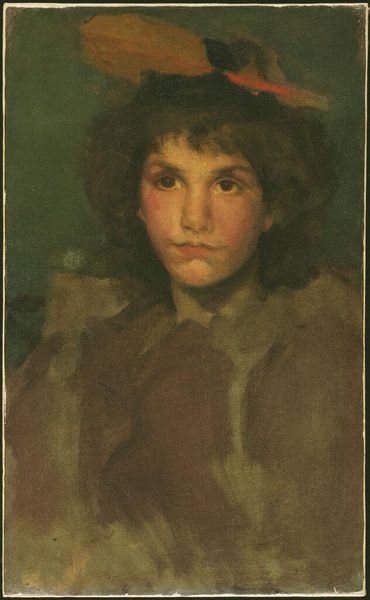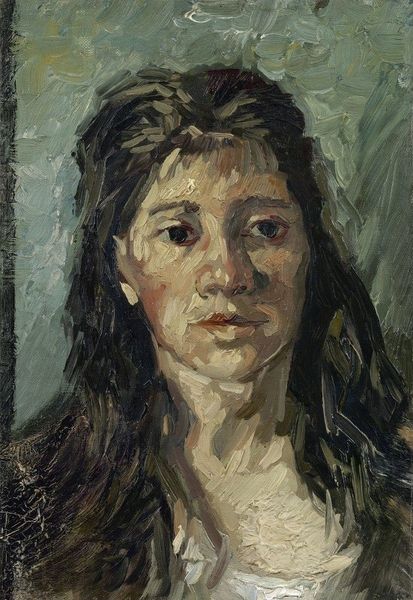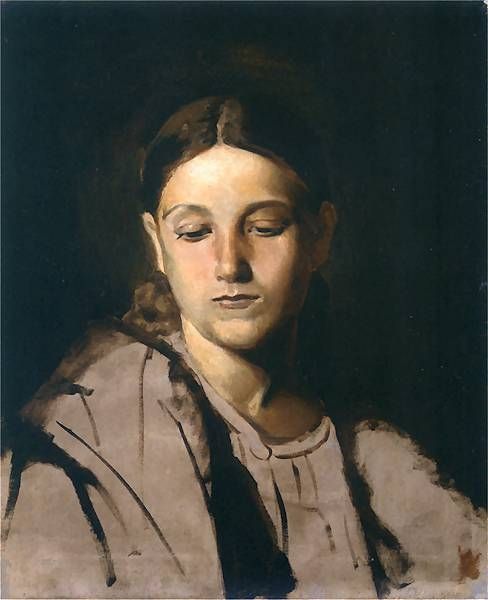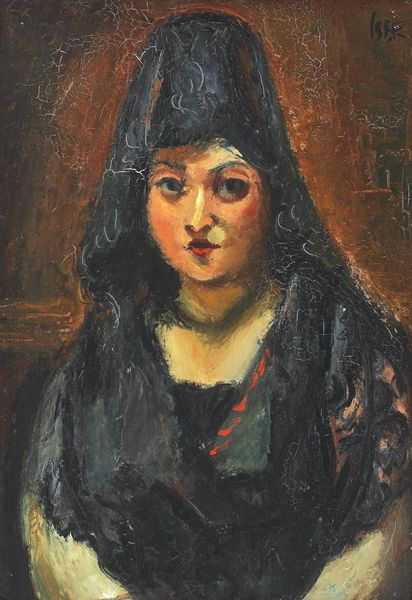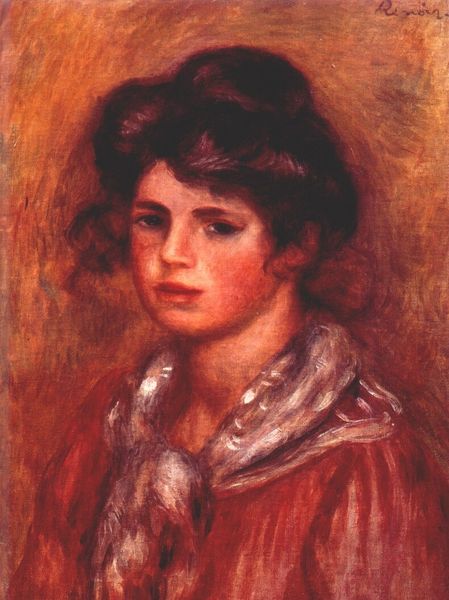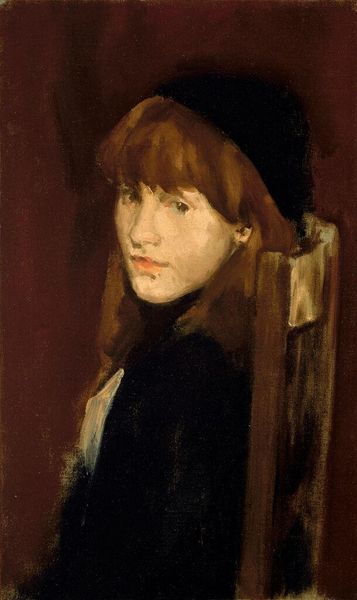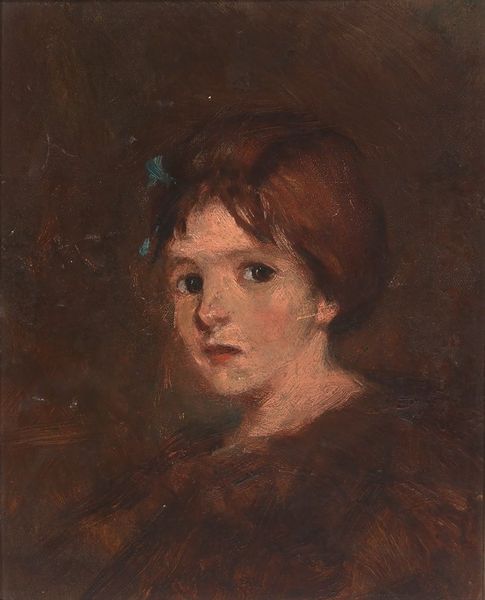
Copyright: Public Domain: Artvee
Curator: What strikes me immediately about this portrait, "Alice Butt," painted circa 1895 by James Abbott McNeill Whistler, is the thick application of oil paint and the warm, almost earthy color palette. It creates a certain mood. Editor: Indeed. There's an undeniable sense of melancholy here. Considering this was painted in the late 19th century, during a period of immense social and political upheaval, I wonder how Alice, the subject, navigated the burgeoning suffragette movement and Victorian ideals? Her downward gaze feels laden with unspoken narratives. Curator: It’s fascinating to consider that in relation to Whistler’s materials. He deliberately chose earth tones, working with the heavy texture of oil to almost obscure details. It’s not necessarily about perfect representation, but more about the emotional impact, right? What was the accessibility of oil paint for portraiture work at that time? Editor: Access certainly played a role. Commissions were crucial for artists like Whistler. Portraits provided not just income, but social capital. To what extent did gender dynamics shape these relationships of patronage? Also, the title is striking given that Victorian society’s public face often elided the everyday existence and names of models. It’s an open invitation, don’t you think, to consider who Alice Butt was? Curator: Perhaps. And what's also curious is Whistler's process – his tendency towards reduction, almost abstraction. The strokes are loose; they prioritize capturing an impression rather than precise likeness. This evokes conversation about what a portrait as a commodity really entails. What labor conditions surround portrait artists’ ability to even execute those works, particularly relative to their personal views of class or privilege? Editor: Right, this also gets into what it meant for a woman to be portrayed—displayed—within this social context. Was she allowed agency in the production of the work or the reception of her own image? Also, what did Whistler hope to convey about Alice beyond just her social standing? Curator: So it appears as though her very self is entangled with societal views and expectations surrounding women. Thinking materially then about the canvas and layers of applied pigment… all are subject to those same contextual demands! Editor: Exactly. Considering Alice's untold story through this lens allows for a richer, more empathetic understanding of the art and the historical period it reflects.
Comments
No comments
Be the first to comment and join the conversation on the ultimate creative platform.
